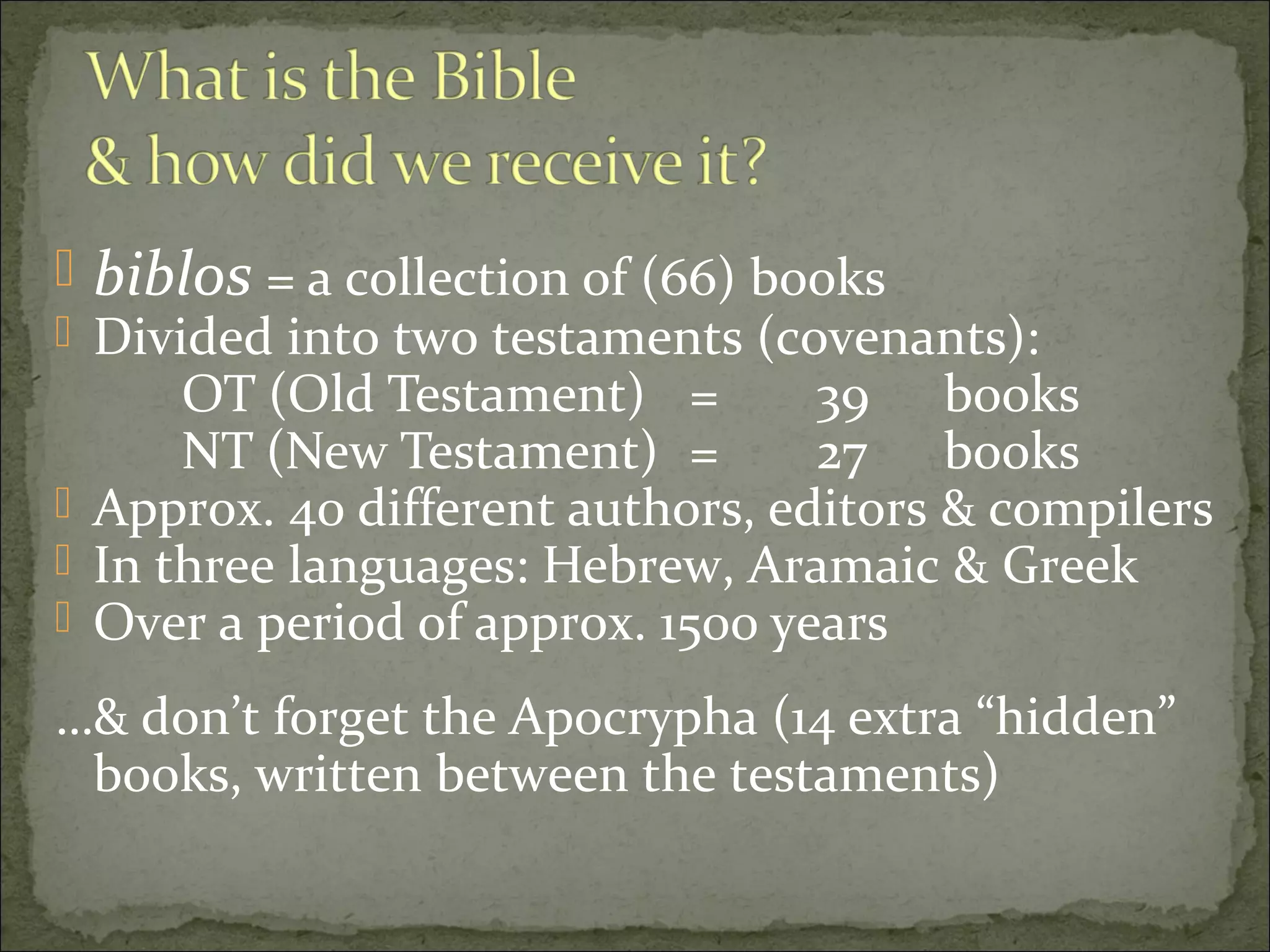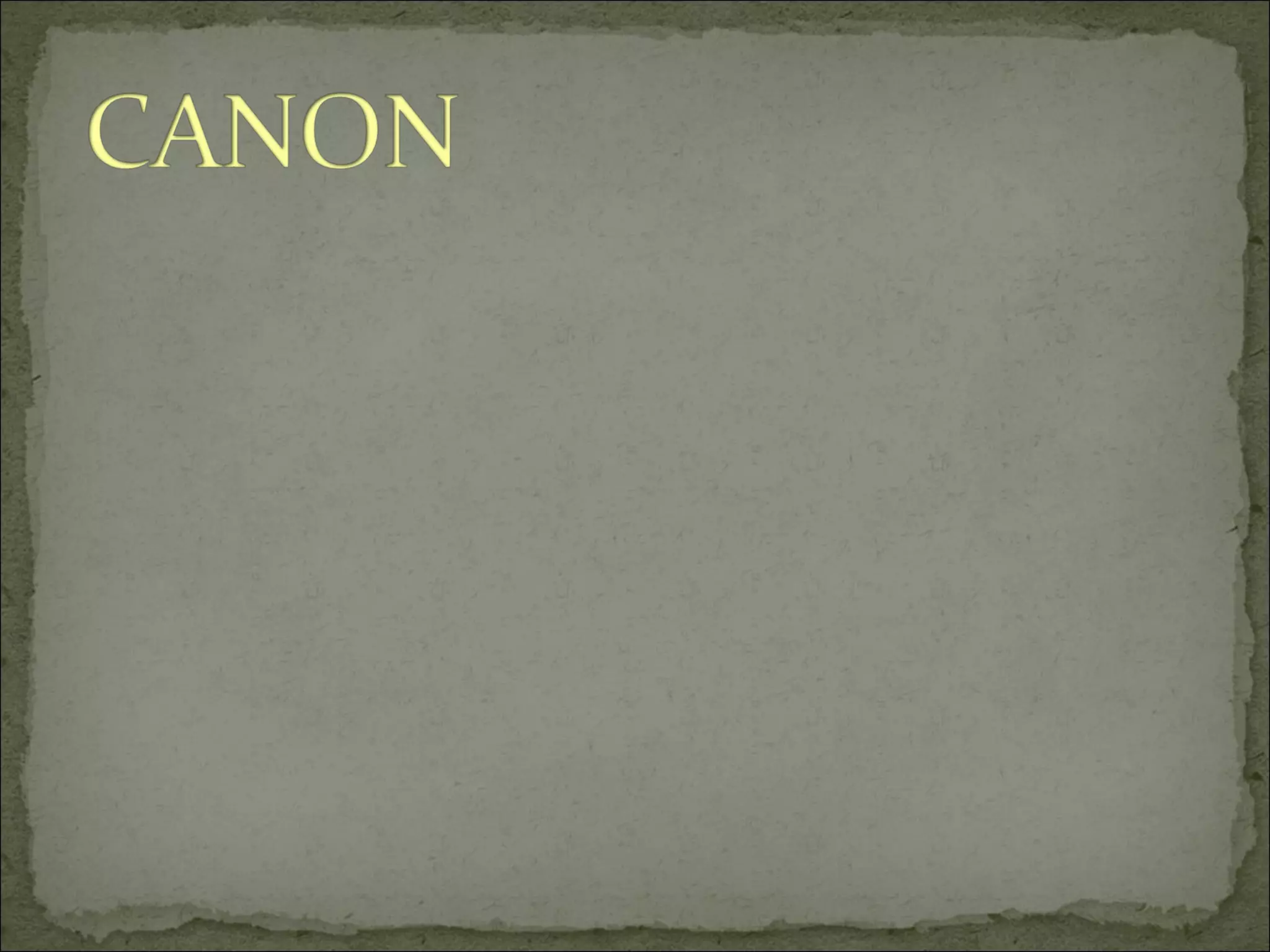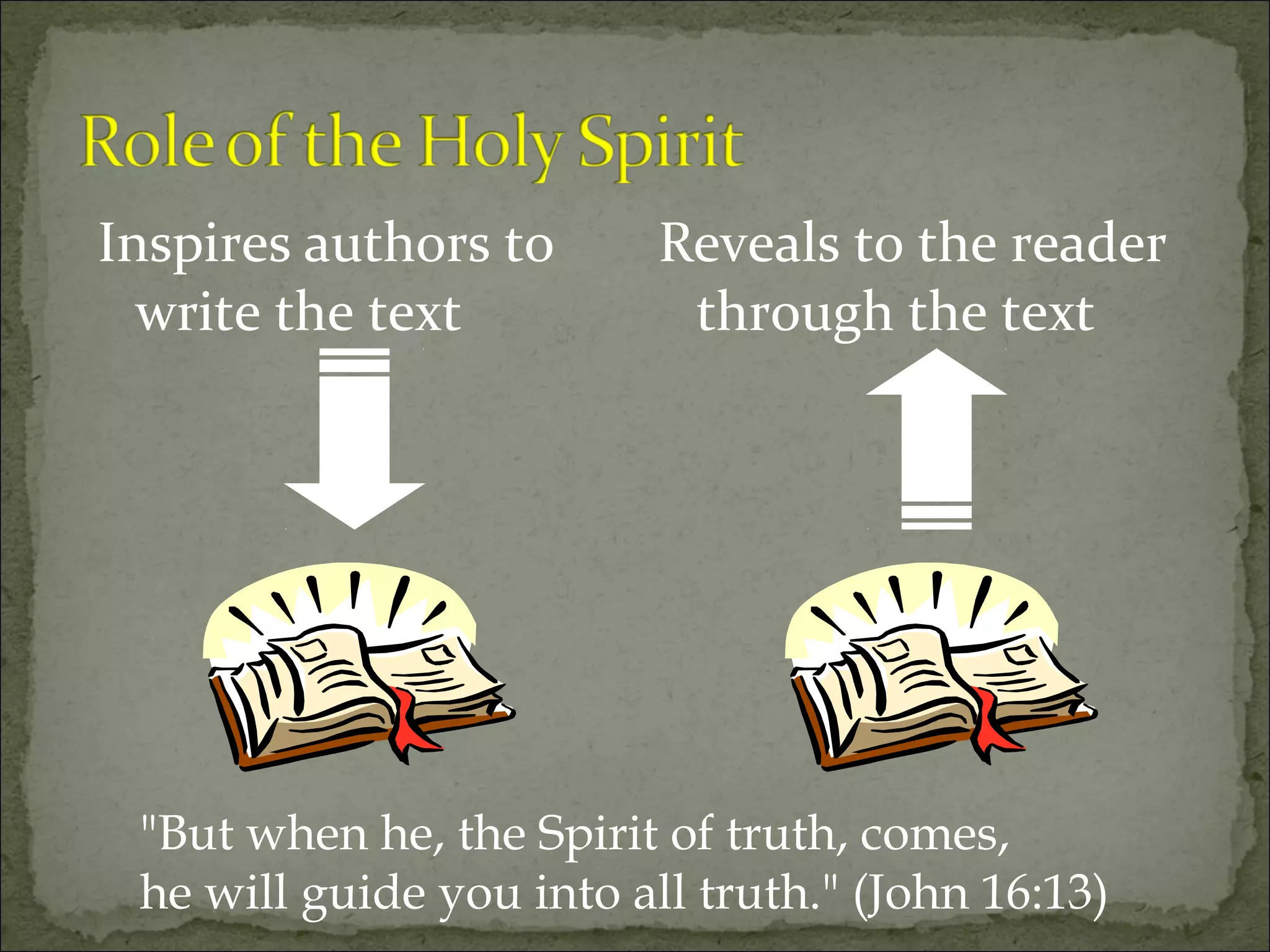This document provides an overview of the goals and content of a course called "Encountering the Old Testament." The course aims to help students intellectually and spiritually understand and engage with the Old Testament. It will cover topics like the composition and origins of the Old Testament texts, principles of interpretation, different genres of literature within the Old Testament, its division into books and sections, and themes that run throughout like God's relationship with humanity, promises of salvation, and fulfillment in the New Testament.



































